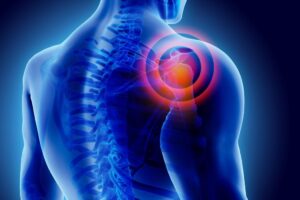Chiropractic Treatment for Glenoid Labrum Tears
A Glenoid Labrum Tear is a shoulder injury that can lead to significant discomfort and limited mobility. It typically manifests as sharp, deep pain within the shoulder, particularly during movement. Alongside the pain, patients may also experience a sensation of stiffness, as well as audible clicking or clunking sounds when moving the shoulder, which can be particularly alarming.
Understanding Glenoid Labrum Tears
The shoulder is an inherently unstable joint compared to others in the body, and the glenoid labrum—a ring of cartilage that surrounds the shoulder socket—plays a crucial role in stabilizing it. Unfortunately, due to its structure and function, the labrum is susceptible to injuries, particularly from activities that involve repetitive overhead motions. Athletes engaged in sports such as baseball, tennis, or swimming are at higher risk, as these activities place considerable stress on the shoulder joint. Moreover, acute injuries, such as a fall onto an outstretched arm, can also result in a Glenoid Labrum Tear.
Chiropractic Care: A Non-Invasive Path to Recovery
Chiropractic treatment can be an effective, non-invasive approach to managing and recovering from a Glenoid Labrum Tear. The primary focus of chiropractic care in this context is to ensure proper alignment of the shoulder joint. Misalignments can place undue strain on the surrounding ligaments, tendons, muscles, and nerves, exacerbating pain and slowing the healing process. Chiropractors are trained to assess these misalignments and perform targeted adjustments to alleviate discomfort and promote healing.
Beyond joint adjustments, chiropractors also consider the overall muscular balance around the shoulder. Imbalances in muscle strength or flexibility can contribute to ongoing instability and increase the risk of further injury. A comprehensive chiropractic care plan will often include specific exercises and stretches designed to strengthen the muscles around the shoulder joint, enhancing stability and support.
The Importance of Neck Alignment
The neck plays a surprisingly significant role in shoulder health. Misalignments in the cervical spine can affect the nerves that control the shoulder muscles, potentially contributing to or exacerbating a Glenoid Labrum Tear. Chiropractic adjustments to the neck can correct these misalignments, thereby improving nerve function and supporting overall recovery. Addressing neck alignment is a critical component of a holistic approach to treating shoulder injuries like a Glenoid Labrum Tear.
Steps to Recovery for Glenoid Labrum Tears
The first step in recovering from a Glenoid Labrum Tear is to consult with a chiropractor for a thorough evaluation. The chiropractor will assess your shoulder and neck alignment, and if necessary, perform adjustments to correct any issues. Following these initial treatments, the chiropractor will guide you through a personalized exercise and stretching regimen designed to strengthen and stabilize the shoulder joint.
Stretches and Strengthening Exercises
Recovery from a Glenoid Labrum Tear involves a focused approach to rehabilitation exercises. These exercises should target the muscles surrounding the shoulder joint, with an emphasis on both strengthening and flexibility. It is important to work both the affected and unaffected shoulders to maintain overall balance and prevent future injuries. Specific exercises and stretches should be tailored to your individual needs and the specific location and severity of your tear, ensuring the best possible outcome in your recovery journey.
In summary, chiropractic care offers a comprehensive, non-invasive approach to managing Glenoid Labrum Tears, focusing on alignment, muscle balance, and targeted rehabilitation exercises to support a full recovery. Specific stretches and exercises should be prescribed based on individual needs and the location of the tear.
